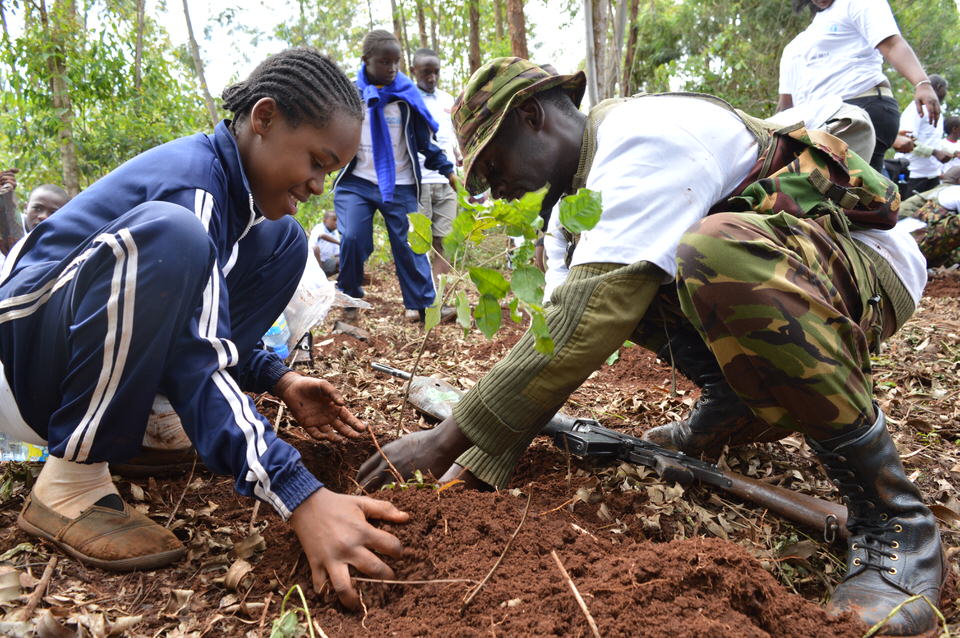National Tree Planting Initiative
The Approach
The following technical design has been adopted for the initiative:
- Watershed Based Approach to Landscape restoration
 This initiative is overally hinged upon the GBM watershed based approach to landscape restoration that has identified and delineated 30 critical watersheds across the five water-towers that are high in biodiversity, and are severely degraded forest areas. The mapping and delineation of priority sites within the water towers is based on a qualifying GIS scientific criterion that analyses the following factors of interest Hydrological, ecological importance, social cohesion, population pressure, resources availability and GBM infrastructure.
This initiative is overally hinged upon the GBM watershed based approach to landscape restoration that has identified and delineated 30 critical watersheds across the five water-towers that are high in biodiversity, and are severely degraded forest areas. The mapping and delineation of priority sites within the water towers is based on a qualifying GIS scientific criterion that analyses the following factors of interest Hydrological, ecological importance, social cohesion, population pressure, resources availability and GBM infrastructure.
Collectively, these watersheds cover more than four million (>4M ha) hectares of land. Once all have been restored, they will provide sustainable natural resources including water to more than eight million (>8M) people in rural and urban areas. To date, GBM has managed to plant over 51 million trees and established over 4900 tree nursery groups as acritical mass for the reforestation activities. This approach ensures that the right tree species are planted in the right places for optimum ecological services.
Table below shows the names and spread of watersheds in the 5 key water towers.
| Water Tower | Priority watersheds |
| Mau | Sirua |
| Cherangany | Kerio |
| Mt. Kenya | Kongoni |
| Aberdares | Malewa |
- Tested Grassroots led approach to community empowerment
The landscape restoration activities are embedded in the GBM 10 steps methodology that has established standard operating procedures that tracks trees performance for 3 years and a token of monetary compensation that socio-economically empowers grassroot communities. This holistic approach also addresses the underlying factors to both poverty and environmental degradation and mainstreams women empowerment in resource management.
The capacity of GBM to mobilize communities to conserve and protect the environment and its women empowerment model is unique in that it addresses women’s economic, cultural, psychological, physical, and emotional needs through a grassroots led approach, and also gives them a voice through rights awareness raising. GBM will mainstream women, youths and persons with disabilities in the rehabilitation activities.
- Geographical Information System (GIS) integration
GBM has a full-fledged Geographical Information System (GIS) facility for effective execution of the watershed based approach to tree planting. The GIS provides useful tools for situation analysis and prioritization that support continuous monitoring and assessment; tracking progress beyond the project life. Using this facility GBM will establish benchmarks based on before and after baseline scenarios to showcase both change and impact trends of the project.
- Partnership with the Kenya Defense Forces (KDF)

The project further builds on GBM partnership with the Kenya Defence Forces (KDF) environmental Soldier programme of more than 10 years that forges joint tree planting forums between local communities and public institution for environmental conservation purpose. The initiative espouses the complimentary role between forests and the army and the need to defend the land from the invisible enemies of soil erosion and desertification. The collaboration covers all institution subunits within marked boundaries and extensive areas of degraded public lands like forests, hillsides and water catchment’s sites of environmental importance.
